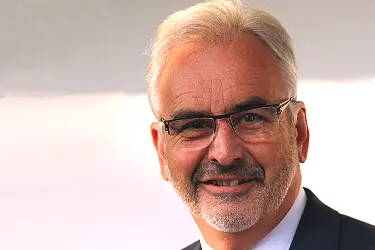Electronics News
Archive : 7 October 2014 год
 Peregrine Semiconductor has introduced two integrated products – a True DC switch and an X-band core chip, both built using the company's UltraCMOS technology.
Peregrine Semiconductor has introduced two integrated products – a True DC switch and an X-band core chip, both built using the company's UltraCMOS technology.
"Peregrine has introduced a broad range of industry leading integrated products and technologies over its more than 25 year history," said Duncan Pilgrim, vice president of marketing. "Today, we continue that legacy of innovative integration with two groundbreaking products that include RF, digital and analogue components on a single die."
At the lower end of the frequency spectrum, Peregrine claims it has set a new standard with the first RF integrated switch to achieve true DC capability. With a frequency range from 0 to 8000 MHz, the PE42020 is said to effectively operate in a previously unobtainable portion of the frequency spectrum. This frequency expansion will be attractive to those who rely on accuracy and precision, such as test and measurement.
The PE42020 features an IIP3 performance of 63dBm and port to port isolation of 37dB at 6GHz. It supports 1.8V and 3.3V control logic and operates in temperatures ranging from -40 to 85°C.
Meanwhile, higher frequencies are addressed with an integrated X-band CMOS chip that applies MMIC design techniques to offer accurate signal control with minimal power loss. These design techniques, such as Lange couplers, have only been used by III-V technologies because of silicon's lossy nature at higher frequencies. Peregrine says it has solved this challenge by using an UltraCMOS sapphire substrate.
Author
Graham Pitcher
Source: www.newelectronics.co.uk
 The 2014 Nobel Prize for physics has been awarded to the three scientists responsible for the invention of blue LEDs.
The 2014 Nobel Prize for physics has been awarded to the three scientists responsible for the invention of blue LEDs.
Professors Isamu Akasaki, Hiroshi Amano and Shuji Nakamurs were told the good news at a press conference in Sweden today. They will share prize money of eight million kronor (£0.7m).
"What's fascinating is that a lot of big companies really tried to do this and they failed," said Prize committee chair Professor Per Delsing, of Chalmers University of Technology. "But these guys persisted and they tried and tried again - and eventually they actually succeeded."
Author
Laura Hopperton
Source: www.newelectronics.co.uk
 Processor IP developer Cortus has launched new cores– the APS23 and 25 – based on its V2 instruction set. The V2 instruction set extends functionality by adding 24bit instructions to the existing 16 and 32bit instructions. Roddy Urquhart, pictured, vp of marketing, noted: "This instruction set will provide for better code density. The different way of coding will be more efficient and we are seeing a 16% improvement in code density."
Processor IP developer Cortus has launched new cores– the APS23 and 25 – based on its V2 instruction set. The V2 instruction set extends functionality by adding 24bit instructions to the existing 16 and 32bit instructions. Roddy Urquhart, pictured, vp of marketing, noted: "This instruction set will provide for better code density. The different way of coding will be more efficient and we are seeing a 16% improvement in code density."
The APS23 core is said to deliver a new level of efficiency, along with ease of integration, for low power connected devices. The core reduces system power by optimising instruction memory size. Meanwhile, the APS25 core is aimed at embedded systems with more computational requirements, as well as greater code density and extendibility.
Urquhart said: "The APS23 will be suitable for many applications which need a power efficient core. The APS25 can also be integrated into more complex subsystems and there is the ability to extend the instruction set with a coprocessor interface."
The APS23 has a Harvard architecture, 16 32bit registers, a three stage pipeline and a sequential multiplier. It delivers 1.44 CoreMarks/MHz in computational performance and draws a maximum of 12.2µW/MHz.
The APS25 is similar to the APS23, but has a five stage pipeline. Users can expect a performance of up to 2.09CoreMarks/MHz, with a maximum power consumption of 20.8 µW/MHz.
Both cores are synthesisable and will be available as RTL. Urquhart said Cortus' V1 cores have been manufactured on processes ranging from 28nm to 0.35µm.
Author
Graham Pitcher
Source: www.newelectronics.co.uk
 The design process and the speed of design – especially within electronics – has never been more critical.
The design process and the speed of design – especially within electronics – has never been more critical.
The demand for shorter design schedules and faster development from concept to production reality impacts all engineers regardless of their area of expertise.
In a dedicated workshop at the Electronics Design Show, which takes place the Ricoh Arena in Coventry between 22 and 23 October, headline sponsor RS Components will look at the products, tools and software solutions that are removing the barriers of cost and complexity from electronic and mechanical design.
During the session, which takes place at 14.15pm on day two of the Show, delegates will learn how simple software tools and products can simplify the design process, and how a different approach to design can accelerate the prototyping process.
To register for this must-attend event, or simply find out more info, click here.
Author
Laura Hopperton
Source: www.newelectronics.co.uk
